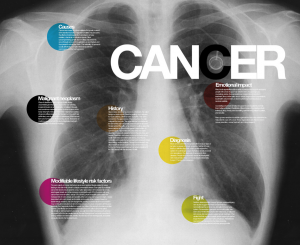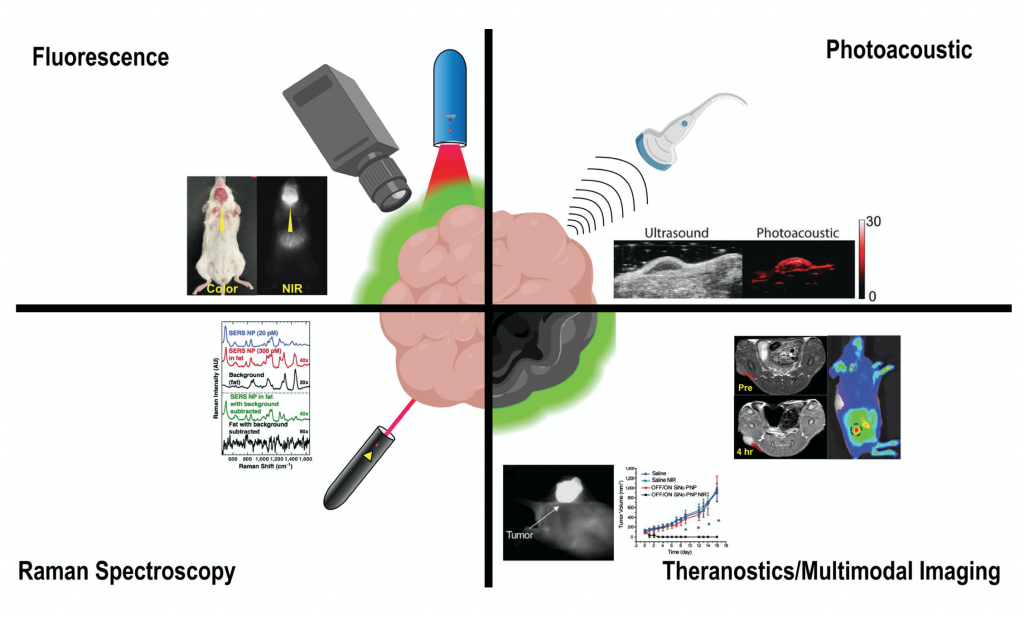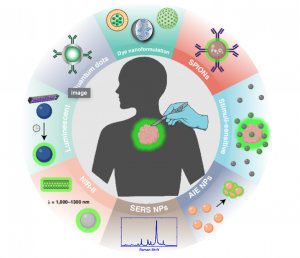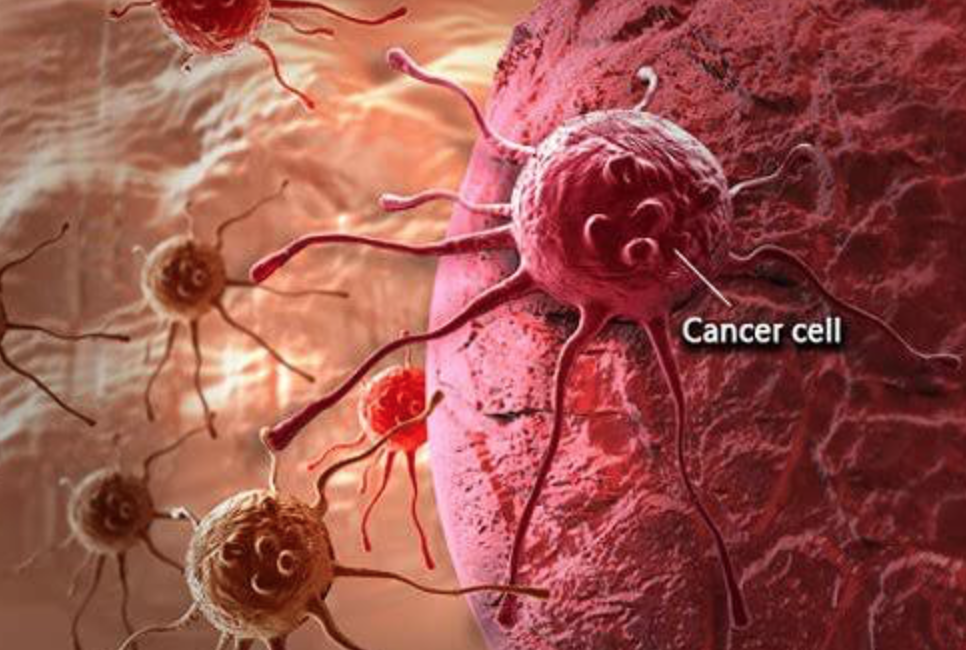Cancer is a word that most of society fears. The reason being that cancer is extremely smart and innovative, but this means that in order to beat cancer, we have to be just as innovative and smart if not more so. Nanoparticles are the answer. Anyone that has had cancer or knows someone who has had it, know that surgically resecting the whole tumour is the mainstay treatment for solid tumours, and it is the most preferred because it is the most effective.

Retrieved from Flickr.
However, the problem is that during surgery it can be very difficult for doctors to determine the difference between health and malignant tissue, especially when on a miniscule scale. This limitation is challenged only by visual and tactile cue, as well as the experience that the surgeon has.
Unfortunately, the ultimate cause of death for a patient with cancer tends to be the cancers pathogen spreading and not from the primary tumour. Therefore, removal of the whole tumour and any extra fragments is vital to patients decreased chance of reoccurrence and increased survival.
Positive surgical margins (PSM) are associated with excess pathogens that were not removed from surgery and occur in about 14-36% of surgeries that resected the tumour.
To aide in the complete removal of cancer and decrease PSM rates, surgical tumour imaging techniques have emerged. Specifically, the use of nanotechnology as they have the ability to be directed to tumours and can provide imaging feedback to surgeons during treatment. Likewise, the advances in engineering and optics have allowed this research to take place, as nanoparticles and image-guided surgery rely heavily on these developments. Such imaging advancements are the optical strategies used for image-guided surgery.
X-rays, ultrasounds, MRIs, etc. are all great imaging devices for diagnosis, staging and preoperative planning, however, they limit translation into the operating room. Image guided surgery is guided with real-time optical imaging feedback. This allows for the surgeon to properly and effectively locate the tumour, detect the residual disease and identify any cancerous or pathogenic fragments in surrounding areas, all while preserving the healthy tissue. This is completed by injecting the patient before surgery with an exogenous contrast agent that accumulates in the tumour and clears the healthy tissue, allowing a contrast to be seen by the naked eye.
The surgeon can then use an imaging system that is specific for the agent that was injected and remove the cancer using real-time image guidance. Most importantly, the doctors can identify any remaining cancer and remove that, which lessons the patients chance of reoccurrence.
One strategy for image guided surgery is using fluorescence, which is the most utilized for tumour detection as it has many advantages. Fluorescence uses particles that glow when observes, and they have high tissue penetration.

Retrieved from the article cited.
Another benefit of fluorescence is that absence of ionizing radiation and high spatial resolution, which in terms of humans means less risk to tissues and a greater visibility for surgeons while operating. Another strategy is photoacoustic imaging, which uses a combination of ultrasounds and light to provide 2D and 3D images or organs and tissues. To isolate the tumour for surgeons, the light laser is directed toward the general area of the cancer, where the energy is absorbed by the tumour and converted to heat, where an ultrasound can detect the area and provide doctors the exact whereabouts of the main tumour and any other cancerous fragments. Additionally, a surface-enhancing resonance Raman scattering technique relies on light interactions to find the tissue of interest. Each tissue has a specific coding, otherwise known as a Raman fingerprint, that can be detected given the proper light interactions, which is what this method utilizes to be successful.

Types of nanoparticles that can be used. Retrieved from the article cited.
Lastly, multimodal imaging uses a combination of imaging modalities considering each one listed above have flaws, as they are only single systems. Using multiple techniques allows for different combinations for any desired preference that a doctor might have. Several nanoparticles and dyes are used in imaging modalities to provide a proper contrast to the naked eye, however there are many issues. There still needs to be research and trials done to better improve tumour specificity, faster tumour uptake and longer retention. To be successful in this field and find the precise nanoparticles and imaging strategy for each certain cancer, these critical issues need to be addressed
to rule out under-performances before surgeons start using the technique.

Retrieved from Flickr.
While there are several challenges in this research, the use of nanoparticles with image-guided surgery is very exciting. This will be the innovative and effective approach to outsmart the smartest thus far; cancer.
Source:
Wojtynek, N., & Mohs, A. (2020). Image‐guided tumor surgery: The emerging role of nanotechnology. Wires Nanomedicine And Nanobiotechnology. doi: 10.1002/wnan.1624

Alex
"This title was very eye catching! That is so interesting that such a ..."
Alex
"This is really interesting! The fact that crops and plants are damaged is ..."
Alex
"Well done, this article is great and the information is very captivating! Ethics ..."
Alex
"I was intrigued throughout the whole article! This is such an interesting topic, ..."
Alex
"This is such an interesting article, and very relevant!! Great job at explaining ..."
Grandpa
"Honey You Did a good job I will forward to my eye doctor "
murphymv
"This article is fascinating because it delves into the details of the research ..."
murphymv
"I agree, adding the photo helped solidify the main finding. "
murphymv
"This is a fascinating finding. I hope this innovative approach to improving transplants ..."
Sherzilla
"This is a great article! I would really love to hear how exactly ..."
Sherzilla
"It's disappointment that these treatments were not very effective but hopefully other researchers ..."
Sherzilla
"I agree with your idea that we need to shift our focus to ..."
Sherzilla
"It's amazing to see how such an everyday household product such as ..."
Lauren Kageler
"I will be interested to see what the data looks like from the ..."
Lauren Kageler
"A very interesting article that emphasizes one of the many benefits that the ..."
maricha
"Great post! I had known about the plight of Little Browns, but I ..."
Sherzilla
"I assumed cancer patients were more at risk to the virus but I ..."
Sherzilla
"Great article! It sheds light on a topic that everyone is curious about. ..."
maricha
"This article is full of really important and relevant information! I really liked ..."
maricha
"Definitely a very newsworthy article! Nice job explaining the structure of the virus ..."
maricha
"It's interesting to think that humans aren't only species dealing with the global ..."
murphymv
"This is very interesting and well explained. I am not too familiar with ..."
Lauren Kageler
"Great article! This post is sure to be a useful resource for any ..."
Lauren Kageler
"Definitely seems like an odd pairing at first, but any step forward in ..."
murphymv
"What an interesting article! As you say, height and dementia seem unrelated at ..."
murphymv
"Great article! I learned several new methods of wildlife tracking. This seems like ..."
murphymv
"Very interesting topic! You explained cascade testing and its importance very well. I ..."
Alex
"This article is really interesting! What got me hooked right away was the ..."
Sabrina
"I found this article super interesting! It’s crazy how everyday products can cause ..."
Erin Heeschen
"I love the layout of this article; it's very eyecatching! The advancements of prosthetics ..."
murphymv
"Awesome article! I like the personality in the writing. Flash Graphene not only ..."
murphymv
"Very interesting work! I don't know a whole lot about genetics, but this ..."
Cami Meckley
"I think the idea of using virtual reality technology to better help prepare ..."
Erin Heeschen
"I wonder if there's a connection between tourist season and wildfires in the ..."
Ralph berezan
"Not bad Good work "
Michelle
"This sounds like it would be a great tool for medical students! ..."